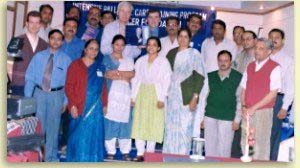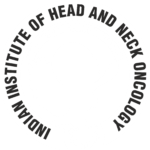District based Palliative Care model
‘Development of a district based model for palliative care’ was the objective of the project proposed by us and approved by AUSAID, of the Commonwealth of Australia. The approach we adopted was to train the medical personnel of the government health system. Thus, enabling them to offer palliative care at the home of the terminally ill patient or at the health center close to his/her home.
The project started in April 1998 and the final programme was held in the first week of December 1999.
We selected Dhar for this project because it is a predominantly tribal area mainly dependent on the government for the delivery of health care.
The district of Dhar is divided into 13 blocks with approximately 2000 primary health workers, mid wives, social development workers, village level local body members, doctors and nurses. Our objective was to involve all these people and create a district level palliative care delivery system.
Given the huge number of health personnel in Dhar, it was impossible for our team to conduct the training programmes within a sensible time frame, without the support of additional trainers. The first step, therefore, was to train a select group of primary health workers as master trainers.
For the training in palliative care, we chose a 3-tiered approach – the base to be formed by all the primary health workers who would be given awareness training on cancer and palliative care. It would be this cadre that would spread the message of early detection and the right of the terminally ill cancer patient to receive palliative care and thus a better quality of life. They were given a 1 day Palliative Care Awareness Programme (PCAP) and 1941 primary health workers were given this training through 55 programmes. (Graph 1 )
Given the fact that 28 different trainers would be conducting the awareness programmes. We put in place a monitoring committee to ensure parity vis-à-vis inputs given. The monitoring committee was made up of representatives of the Dhar district administration and the Foundation. The conduct of each awareness programme was observed by at least one member of this committee.
The middle tier to consist of health workers who would ensure that the instructions given by the doctor are being followed by the care givers of the terminally ill cancer patient. This cadre was necessary because a doctor cannot make daily visits to the houses of the terminally ill patients. It is these health workers who will not only ensure that the instructions are being followed but equally importantly, they will offer the emotional support, which is so important for the terminally ill patient and the family. (Graph 2 )
 The 3rd tier was made up of doctors who received an exhaustive 10-day training in palliative care. These doctors were from the district health set-up and post training, they are equipped to work as independent palliative care consultants. They are, of course welcome to seek support from our faculty any time the need arises.
The 3rd tier was made up of doctors who received an exhaustive 10-day training in palliative care. These doctors were from the district health set-up and post training, they are equipped to work as independent palliative care consultants. They are, of course welcome to seek support from our faculty any time the need arises.
As a part of this project, a workshop on ‘Regional blocks for pain relief’ was also held. The workshop was conducted by Dr. Sushila Shah, President, Indian Society for Pain Relief, Mumbai, and her colleagues, Drs. Sharma and Gehdu, anaesthesiologists from the Tata Memorial Hospital, Mumbai. 50 doctors, most of them anaesthesiologists, attended the workshop. The faculty demonstrated pain block techniques on CTV (closed circuit television). Panel discussions and interactive sessions were also held.
It must be mentioned here that Dr. Robert Twycross’ guidance and contributions were invaluable for the successful conduct of this project.
